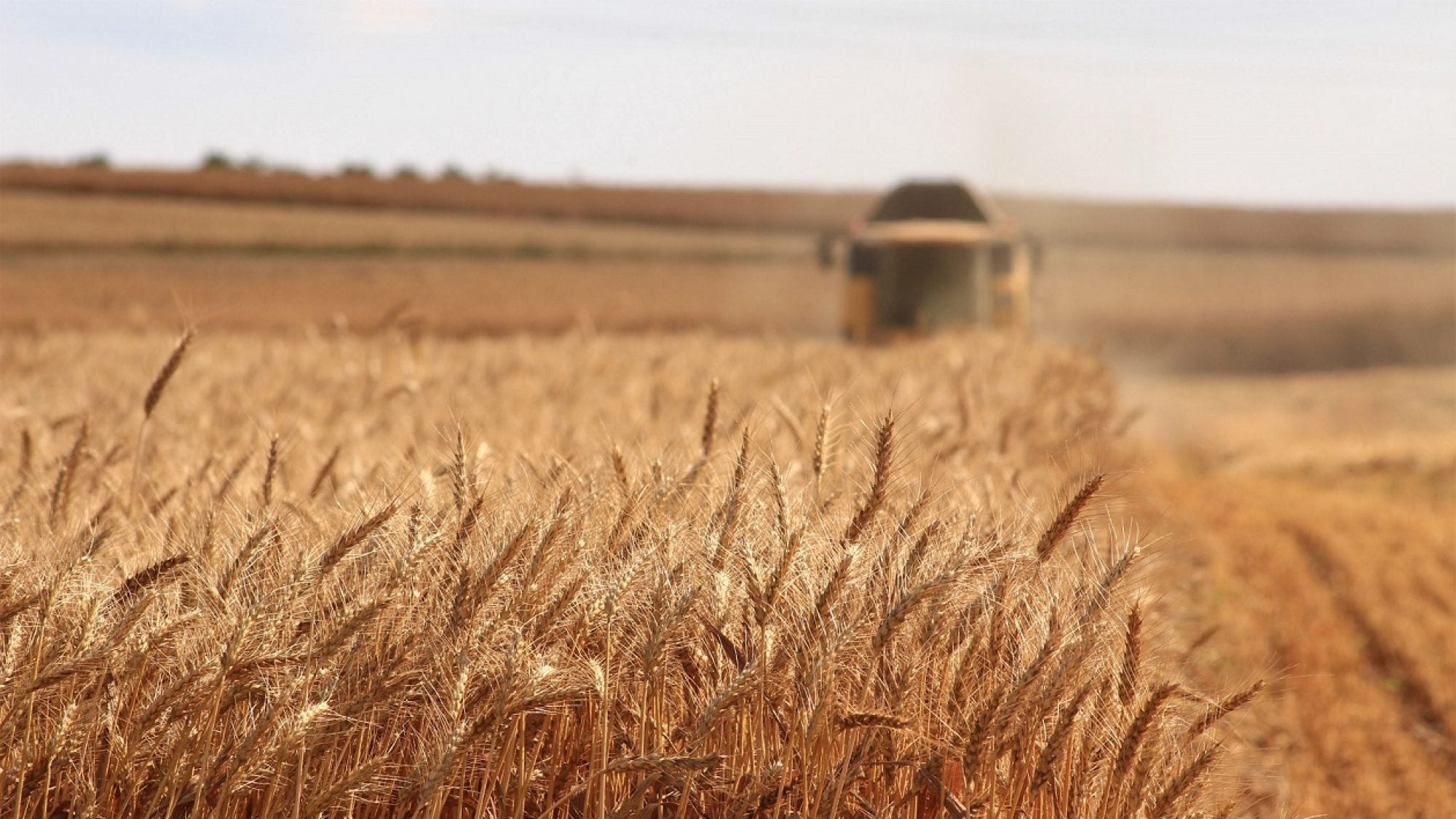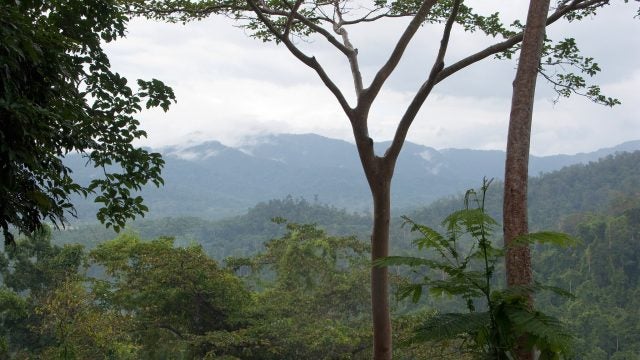
Title: Confronting Global Food Insecurity with U.S. Diplomatic Historian Kelly McFarland
Food insecurity is one of the most daunting global issues: around one billion people are at risk of malnourishment across the world. In 2021, the New Global Commons Working Group at Georgetown University’s Institute for the Study of Diplomacy (ISD) put together Peace Through Food: Ending the Hunger-Instability Nexus, a report that synthesizes analyses of food scarcity and political instability to guide policymakers. In an interview with Kelly McFarland, Director of Programs and Research at the ISD, GJIA discusses the gravity of this crisis and the implications of the Working Group’s report for the leadership of nation-states and international organizations.
Georgetown Journal of International Affairs: In the report Peace Through Food: Ending the Hunger-Instability Nexus, the Working Group described various explanations for worldwide food insecurity with deep concern, including food as a weapon war, food waste, climate change, and global unequal food distribution. The COVID-19 pandemic worsened many of these conditions, but to what degree did COVID-19 undermine the global campaign to end hunger, most notably as one of the United Nation’s Sustainable Development Goals for 2030? Further, what were the most destructive elements of this pandemic pertaining to food security, and which regions felt the most significant impact?
Kelly McFarland: The COVID-19 pandemic had a huge effect on global hunger, the fight to end global hunger, and the sustainable development goals of the United Nations (UN). I think it undermined this in several ways: first of all, it had a huge effect on expanding the number of people who are hungry and that are going hungry because of the supply-chain breakdowns—including panic-buying in some developed countries or rich countries like the United States. We all saw increased lines of food banks and shelves without meat because of the closure of meat processing plants in the United States. Shutdowns affected people’s ability financially to purchase food as well.
COVID-19 also took people’s focus away from hunger because you’re dealing with a global pandemic. A lot of our efforts were put into creating testing regimes, getting tests that worked out to the public, then getting vaccines and getting those shipped around the world. I think this is something to be expected, but it did affect food and end hunger in multiple ways.
GJIA: Given the current inaction on addressing climate change, what obstacles will climate change bring about in the upcoming years and decades for food security? The ISD report touches upon, for example, locust swarms and extreme weather events. Is climate change already the most daunting challenge for food security?
KM: Yes, I think it is, but you also have to keep in mind that all of this is tied together. Our current food system is the third or fourth-largest emitter of harmful gasses that cause climate change. The locust swarms had a serious effect on crops in Africa and you have worsening extreme weather events all over the world, whether it is longer droughts or worsening storms. Climate change causes hurricanes that suck up more water into the storms and dump rain at levels that we have not seen before. You have extremes of drought on one hand in the southwest United States, a region that is currently going through a decade-long drought. On the flip side, there are massive storms that dump rain and drown crops in the southeast United States. If something is not done, climate change is going to cause a lot more harm before different areas of the world will be able to grow crops where you necessarily did not before.
GJIA: The migration crisis is one of many consequences that have resulted from food insecurity. What responsibilities do states and international organizations have in mitigating this crisis?
KM: I think they have a huge responsibility and this is all intertwined. Climate change causes a lot of food insecurity, although not necessarily all of it. People also cannot get access to food because of conflict, so they migrate. We did a working group report on this as well back in 2016 about environmental security and human migration, focusing on how people are migrating more because of climate change and the inability to continue their past livelihoods. A lot of that migration revolves around creating or producing food. That is a big and ongoing issue, and I think the answer lies in a lot of different places: we need to understand that people are moving for these reasons, they are going to be moving in larger numbers in the future, and we have to figure out ways to deal with that. We need to create new mechanisms to take those people in and think of new ways to allow them to secure livelihoods without moving. We need to do more on climate change to get to the point where temperatures do not rise to a level that makes things even worse; that way, we can cut down on the numbers of migrants moving for these reasons. The increasing temperatures are going to continue to get worse, so the international community needs to step up to find ways to deal with this—potentially through regional bodies that are created in areas such as the Sahel in Northern Africa where the desert is getting bigger and folks are already moving and migrating in large numbers. In the Middle East, it is going to get harder and harder to grow food while it gets hotter and hotter. There are many places around the world like that where for one reason or another, it is going to be harder to sustain livelihoods and grow food. The more we can do to think about that and wrap it into policies for the future, the better off we will be in not having these political crises in the future.
GJIA: The report emphasizes the need to understand food security as a first order and global commons right rather than a commodifiable good. What states or organizations have adapted this first-order framework into their work?
KM: I know that the UN and some of the international bodies are trying to view food security in this fashion, but as far as states go, it hasn’t moved beyond the international bodies. I also know that there are a lot of NGOs, think tanks, academics, and other people who try to reframe it in that way. Framing food security as a global commons right goes a long way towards using food as a means to end the conflict. Not only will it get to the sustainable development goals and try to end hunger, but another byproduct of that approach enables us to end many conflicts that are caused by hunger and food insecurity. It helps us avoid potential future conflicts as well by taking food out of the equation as a recruitment method for militant groups that have exclusive access to food. I think emphasizing this rights-based approach goes a long way to stemming a lot of those issues.
GJIA: The report repeatedly emphasizes that humanitarian aid alone is not enough to address food insecurity. Can humanitarian aid be used in tandem with structural change? If so, how?
KM: Humanitarian aid is not going away, obviously, and we’re not saying that it should or could in this paper. We’re just saying that it’s not enough. Humanitarian aid does not get at those structural issues that are causing the need for humanitarian aid in the first place. That is where we need to work at changing the food systems overall and create situations where groups are not jumping to conflict over food in the first place. I think that, in those instances, humanitarian aid is always still going to be needed and will be used in tandem with these larger structural policies that can be put in place to try to fix and change the food systems where we hopefully won’t need as much humanitarian aid in the future.
GJIA: The report lists several international organizations, government agencies, and NGOs that campaign against food insecurity. Does any single organization particularly stand out as an example for other groups to model their strategies? Or would that be very difficult to implement as each region faces food insecurity within its special context?
KM: We note in the working group report that each country region and community within a country is unique. We have to make sure that we take this into account when implementing policies and changes to the structure of the system moving forward. You can’t necessarily take a top-down approach and plug it in globally: that doesn’t work. We need to structure all of these plans to a local or regional context that works best for that specific local region. At times, we can take local fixes and policies and expand them outward, but we must take that individual context into account when we implement these new policies elsewhere. I think there are a lot of NGOs or international bodies that are working well on this. There is a very good structure in place that needs to be tweaked and refocused at times. It’s not necessarily a complete rebuild of the structure of the system. For instance, we talked about the need for refocusing how we talk about food insecurity and change vocabulary and language to make it a more public-facing issue.
GJIA: Do you have any last thoughts or recommendations?
KM: The creation of this report—including meetings that brought in specialists, generalists, practitioners, academics, think tank folks, and government folks to talk about this issue—really put in stark terms how big of an issue food insecurity is, and that it is not going away. We don’t have the correct tools overall in place to combat this and push back against growing hunger. It is so intertwined with global health, pandemics, climate change, and conflict. People need to be confident that they can feed their families and get the nutrition they need: we need to look at this through a nutritional lens, not necessarily a caloric lens. This is a big and intertwined issue for all countries, not just developing or poor nations, but even countries in the West and the United States. I think food insecurity is something that people should be aware of, and we need to do a lot more to fix the system because the challenges to food security are just going to grow in the coming decades. It’s a daunting challenge, but something I think, with the right focus, we can have some positive success in the future.
. . .
Kelly McFarland is a U.S. diplomatic historian at Georgetown University and the Director of Programs and Research at the Institute for the Study of Diplomacy. He previously served with the Office of the Historian in the Department of State where he specialized in compiling and editing foreign relations papers between the United States and the Middle East.
Image Credit: rawpixel.com, CC 1.0
Recommended Articles

Cruises have increasingly become a popular choice for families and solo travelers, with companies like Royal Caribbean International introducing “super-sized” ships with capacity for over seven thousand…

In March 2025, widespread protests erupted across Türkiye following the controversial arrest of former Istanbul Mayor Ekrem İmamoğlu, an action widely condemned as politically motivated and…

In this interview, GJIA sits down with Jojo Mehta, Co-Founder and Chief Executive of Stop Ecocide International, to discuss the global movement to codify ecocide as an international…